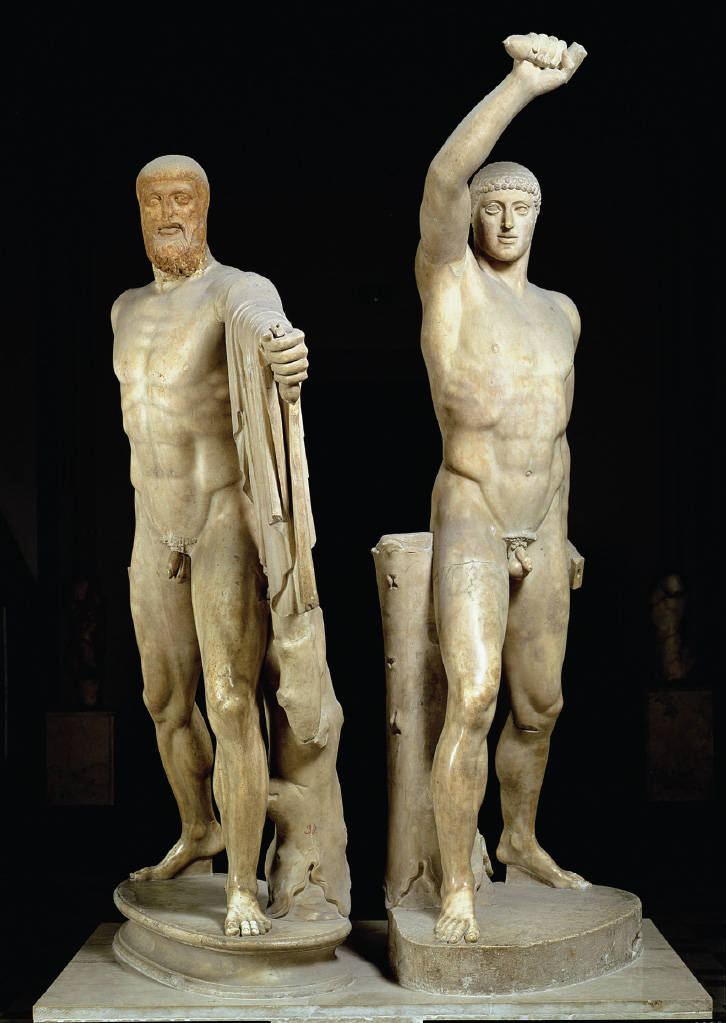Visual Source 3.2
Harmodius and Aristogeiton
Very different in its style and message is Visual Source 3.2, deriving from Athens around 500 B.C.E. and shown here in a surviving Roman copy. It is a statue of two aristocratic male lovers, Harmodius and Aristogeiton, who conspired in the year 514 B.C.E. to kill the tyrant who governed Athens. At the time, the word “tyrant” did not imply a despotic or oppressive ruler, but simply someone who ruled alone and had come to power by force, often with popular support. The particular tyrants then in power in Athens, the brothers Hippias and Hipparchus, were in fact reasonably benevolent, but Hipparchus had made an unwelcome sexual advance to Harmodius and when rejected had publicly insulted the sister of Harmodius by questioning her virginity. Thus personal, rather than political, motives largely inspired the murder of Hipparchus and the subsequent killing of the two conspirators.
A few years later in 510 B.C.E., an invasion from Sparta finally overthrew the remaining tyrant Hippias. This opened the way to more a democratic system for Athens under the leadership of the reformer Cleisthenes, who destroyed the power of the great aristocratic families and established the central role of popular assembly, chosen by lot from among the citizens of the city. Athenian authorities then commissioned an idealized statue of the lovers, each bearing two swords, to mark the moment when freedom was restored to Athens, ignoring the sexual rivalries that triggered the killing of the tyrant. Focusing attention on the supposed purity of their intentions diminished the role of Cleisthenes, whose tactics and motives drew suspicion among some Athenians. It also diverted attention away from the role of Sparta, longtime rival of Athens, in facilitating the transition to democracy.
These were the first public statues of mere mortals, rather than gods, erected in Athens. At its base were inscribed the words of a poet: “A marvelous great light shone upon Athens when Aristogeiton and Harmodius slew Hipparchus.” Drinking songs celebrated the pair who “killed the tyrants and restored equal laws to Athens,” while subsequent legislation forbade slandering them and prohibited the use of their names for slaves. Later seized by the Persians during the Persian Wars, the statues were returned to a grateful Athens by Alexander the Great.

Question
How does the message of these statues differ from that of Visual Source 3.1? What elements of these statues might convey the values of Athenian democracy?
Question
It was common in Athenian sculpture of the time to portray males in the nude. What does their nudity add to the message of the statue?
Question
What does the willingness to celebrate two male lovers suggest about the sexual attitudes of Athenians of the time?
Question
How might you understand the willingness of Athenians to transform a purely personal quarrel into a political statement?